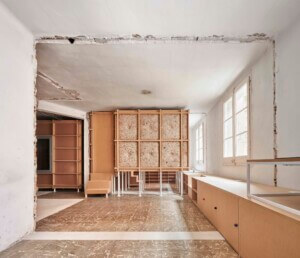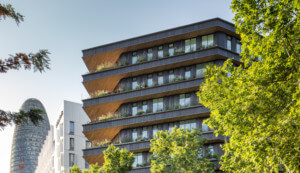Axing the automobile is a popular trend in Europe of late. In 2003, London introduced the congestion charge, Helsinki wants to render cars obsolete, and last year Oslo announced plans for its city center to go car-free by 2019. The city of Lyon, meanwhile, has championed the “new mobility” as prescribed by politician Gilles Vesco, something which has seen the number of cars entering the city fall by 20 percent in the last ten years.
Now Barcelona, under its new mobility plan and armed with a $11.2 million budget, is aiming to curtail car use by 21 percent within two years. The scheme seeks to turn streets into “citizen spaces” by liberating 60 percent of roads dominated by cars.
Famous for its grid system planned by Spanish civil engineer Ildefonso Cerdá in the 19th Century, the district of Eixample will be the first area subject to the new plans. Here, superilles (superblocks) will span nine actual blocks (three by three) and restrict vehicles entering unless owned by residents or businesses within. Once inside vehicles will only be allowed to travel 6mph compared to the city standard of 30mph (keeping to the apparent rule of fifths).
The superilles will also incorporate changes in other aspects of traffic circulation including new road signage and bus routes. Other methods of transport are being encouraged, including public transport and cycling (186 miles of new cycle lanes are also being put down).
According to Salvador Rueda, director of the city’s urban ecology agency, superilles are set to encompass between 5,000 and 6,000 residents. This is a figure which he says is “the same as many small towns. Everything we need to consider to face the challenges of this turn of a century—construction, economy, water, residues, metabolisms, social cohesion—should be captured in these superblocks.”
In light of recent studies, air pollution has resulted in 3,500 premature deaths in the city’s metropolitan area, a figure that equates to 0.1 percent of the population. Barcelona’s council highlights traffic accidents, increasing levels of obesity, and a lack of green spaces as other factors for the plan’s enactment.
Just last year, there 9,095 traffic incidents which led to 27 fatalities. A reported one in five children in the city are either overweight or on the way to being so. Meanwhile, greenery in Barcelona is also hard to come by, with just 71 square feet of green space per resident. That’s below the World Health Organization’s recommendation of 97 square feet, London’s 290 square feet, and Stockholm’s staggering 942 square feet per person.
“Anyone will be less than 300 meters from a bus stop at any time—and average waiting times will be of five minutes anywhere in the city [against the current average of 14],” Rueda says. The system would also be “an equitable network in which one could go from any point A to point B with just one transfer in 95% of the cases. Like in a game of Battleship”.
“We want these public spaces to be areas where one can exercise all citizen rights: exchange, expression and participation, culture and knowledge, the right to leisure,” he added.










